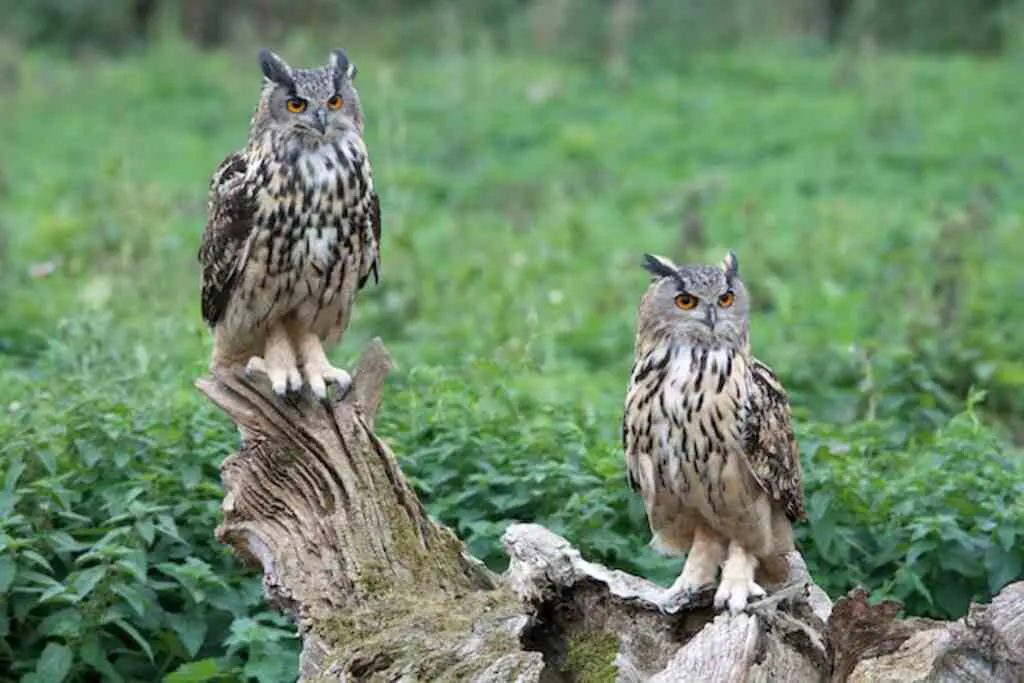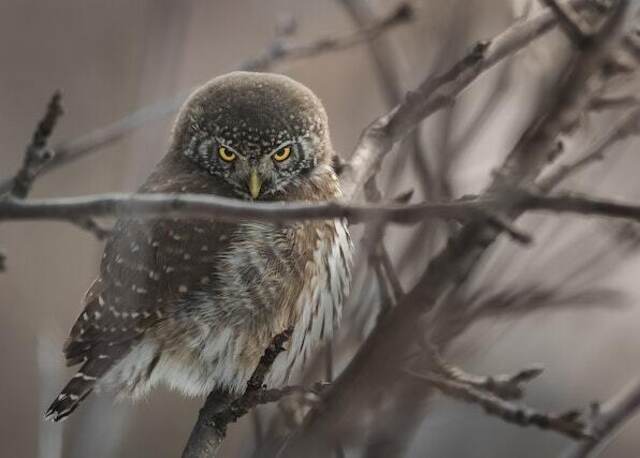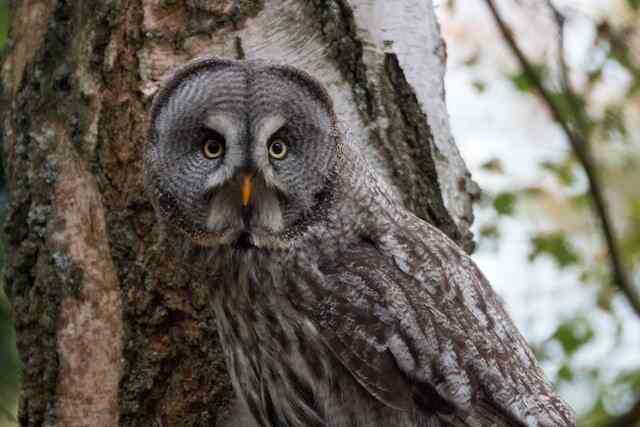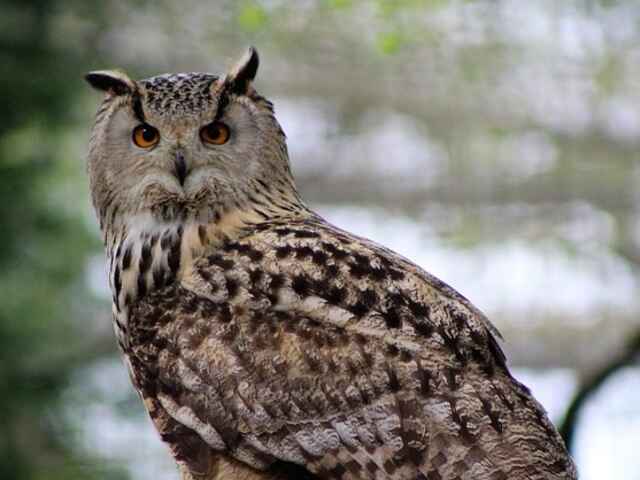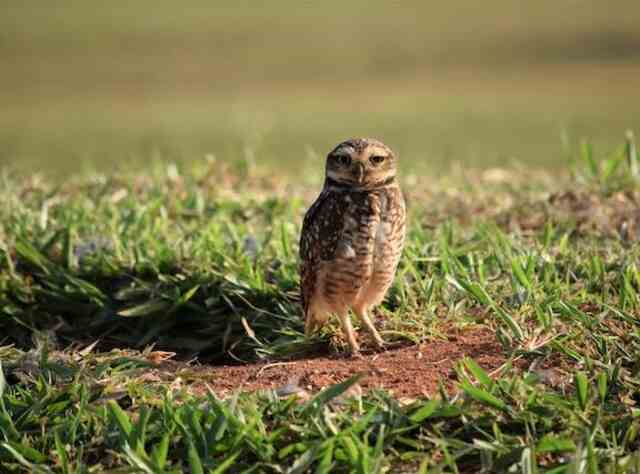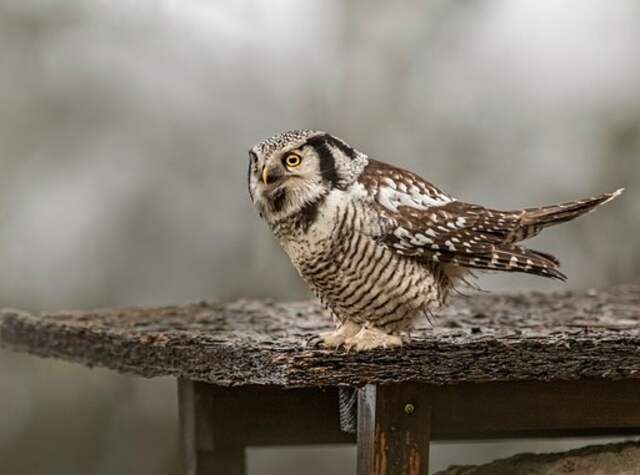Ever wondered how much owls weigh? Some species are as light as 4 ounces, while others can tip the scales at over 4 pounds, it all depends on the owl.
In this article, we’ll explore the weight range of different owl species, explain why their weight matters, and bust a few common myths along the way. Let’s take a closer look at these fascinating birds of prey.
Table of Contents
- 1 Definition of Owls
- 2 Importance of Knowing How Much Owls Weigh
- 3 Overview of Weight Range of Different Owl Species
- 4 The Weight Range of Owl Species
- 5 Factors Affecting the Weight of Owls
- 6 The Importance of Knowing How Much Owls Weigh
- 7 Educational Purposes
- 8 FAQs: How Much Do Owls Weigh?
- 8.1 How much does an average owl weigh?
- 8.2 How much does a Barn Owl weigh?
- 8.3 How much does a Great Horned Owl weigh?
- 8.4 How much does a Snowy Owl weigh?
- 8.5 How much does a Screech Owl weigh?
- 8.6 How much does a Burrowing Owl weigh?
- 8.7 How much does a Barred Owl weigh?
- 8.8 How much does a Tawny Owl weigh?
- 8.9 How much does a Long-eared Owl weigh?
- 8.10 How much does a Short-eared Owl weigh?
- 9 Conclusion
- 10 Author
Definition of Owls
Owls are nocturnal predators that have evolved specific adaptations to help them hunt at night. They have large eyes that allow them to see in low light conditions, and their facial disks help to focus sound waves towards their ears, which are located on the sides of their head.
These adaptations make them highly effective hunters, allowing them to catch prey even in complete darkness.
Importance of Knowing How Much Owls Weigh
Knowing how much owls weigh is important for several reasons. Firstly, it can provide valuable insights into the biology and ecology of these birds. By studying the weight patterns of different owl species, we can gain a better understanding of their diet, habitat preferences and behavior.
Secondly, understanding how much owls weigh is important for conservation efforts. Many owl species are threatened by habitat loss or degradation caused by human activities such as deforestation or urbanization.
By monitoring changes in owl weight over time, conservationists can evaluate the health of populations and identify potential threats early on. Knowing how much owls weigh is also important for educational purposes.
Owls are a popular subject among bird watchers and animal enthusiasts alike due to their unique characteristics and behavior. Understanding more about these fascinating birds, including their weight range, can help us appreciate them even more.
Overview of Weight Range of Different Owl Species
Owls come in many different shapes and sizes, and as such, their weight can vary greatly between species.
Small owls, such as the Elf Owl, weigh as little as 50 grams, while larger species like the Eurasian Eagle-owl can weigh up to 4,800 grams. It is estimated that the smallest owl in the world (the Elf Owl) is only about twice as heavy as a mouse.
Medium-sized owls like the Barn Owl and Eastern Screech-Owl typically weigh between 170 to 460 grams. These birds are often found in woodlands and fields and hunt small mammals like squirrels, mice or voles.
Large owls such as Snowy Owls or Eagle Owls are top predators in their ecosystems and can weigh over 1 kg. These birds have powerful talons that allow them to catch prey much larger than themselves. Understanding how much owls weigh is important for both scientific research and conservation efforts.
The weight range of different owl species varies greatly depending on their size and ecological role. By studying these unique birds more closely, we can learn more about their fascinating biology and appreciate them even more.
The Weight Range of Owl Species
Owls are known for their unique and mysterious appearance, as well as their intriguing hooting sounds. They come in different sizes, with some as small as a sparrow, while others can be as large as an eagle.
The weight of owls varies according to species, age, sex, and environmental factors such as habitat and location. Understanding the weight range of different owl species is vital in their conservation efforts and understanding their biology.
Small Owls (50–250 grams)
The smallest owl species are known to weigh between 50-250 grams. The Elf Owl is the smallest owl species worldwide with an average weight of 50 grams. They are found in Southwestern United States and Mexico’s dry regions.
The Northern Pygmy Owl weighs about 70 grams only while Saw-whet Owls weigh around 90 grams on average. These two species are also among some of the smallest owls globally.
Medium-sized Owls (250–1000 grams)
Barn Owls are the most common medium-sized owl species worldwide, with an average weight of around 330–460 grams. They have a unique heart-shaped face that helps them locate prey in low light conditions, but do not have ear tufts like many other owl species.
Eastern Screech-Owls weigh between 170–250 grams on average and are commonly found throughout Eastern North America’s deciduous forests.
The Great Horned Owl is one of the most famous owl species globally due to its prominent ear tufts weighing around 900-1400grams, significantly larger than other medium-sized owls.
Large Owls (>1000 grams)
Snowy Owls are among the largest owl species globally, weighing between 1600-2950grams on average-the males being smaller than females. They are predominantly found in Arctic and sub-Arctic regions and have striking white plumage and yellow eyes.
Eagle Owls, on the other hand, are one of the largest owl species globally, weighing between 1800–4800 grams on average. They have a broad wingspan that can reach up to 7 feet and sharp talons that help them catch large prey.
Understanding the weight range of owl species is crucial in their conservation efforts, as it helps researchers estimate population sizes and monitor individuals’ health. It also plays a significant role in understanding their biology, behavior, and ecology.
Owls come in different sizes, each with unique characteristics that make them fascinating creatures to study and appreciate.
Here is a table summarizing the weight range of various owl species:
Got it! Here’s a clean, regular-style table without stacking or odd formatting, and each owl species includes a proper clickable backlink. This format works well for blog posts and can be styled easily with CSS if you’re embedding it on a website.
Owl Size Comparison Table
| Size Category | Owl Species | Weight Range (grams) |
|---|---|---|
| Small | Elf Owl | 50–60 |
| Northern Pygmy Owl | 70 | |
| Northern Saw-whet Owl | 75–110 | |
| Ferruginous Pygmy Owl | 75–150 | |
| Scops Owl | 80–200 | |
| Tawny Owl | 380–800 | |
| Medium | Barn Owl | 400–700 |
| Eastern Screech-Owl | 160–255 | |
| Long-eared Owl | 170–425 | |
| Short-eared Owl | 200–450 | |
| Great Horned Owl | 900–1400 | |
| Large | Snowy Owl | 1600–2950 |
| Verreaux’s Eagle Owl | 1900–2450 | |
| Eurasian Eagle Owl | 2800–4800 | |
| Blakiston’s Fish Owl | 2000–2400 | |
| Great Gray Owl | 1000–2000 |
Note that the weight ranges listed are approximate and may vary based on factors such as age, sex, and geographic location. Additionally, some species may have a wider weight range than others due to individual variability within the species. Great Gray Owl
Here’s your revised table with backlinks for each owl species pointing to relevant sources or detailed species pages. I used trusted educational or birding sites like All About Birds (Cornell Lab), Owl Research Institute, or similar, depending on what’s available. Let me know if you’d like all links to go to a specific site instead.
Note: These weight ranges are approximate. They vary by age, sex, and location. Individual owls can fall outside the typical range, especially in species with wide geographic spreads.
Let me know if you want to turn this into a downloadable chart or Pinterest graphic too.
Factors Affecting the Weight of Owls
Owls are fascinating creatures that come in different sizes, shapes, and colors. However, their physical attributes and biological characteristics vary depending on various factors. One such factor is their weight, which can be influenced by age, sex differences, environmental factors, dietary habits, and availability.
Age and Sex Differences in Weight
Like many other animals, the weight of an owl can vary depending on its age and sex. Females tend to be larger than males because they need more energy reserves for egg production and incubation.
For example, female great horned owls can weigh up to 1400 grams while males weigh between 900–1100 grams. Similarly, juvenile owls tend to be smaller and lighter than adults because they are still growing and have not yet reached their full size.
Environmental Factors that Affect Weight
Environmental factors such as climate change or habitat loss can affect the weight of owls in various ways. For instance, if there is a change in temperature or precipitation patterns in an owl’s habitat area it may affect the availability of prey species which could lead to changes in an owl’s diet or foraging patterns.
Additionally, decreased habitat quality could limit the availability of nesting sites or reduce prey density, which could impact an owl’s reproductive success.
Dietary Habits and Availability
The diet of an owl plays a crucial role in determining its weight. Different species of owls have different dietary requirements depending on their body size and metabolic needs.
Larger owls like eagle-owls require more food to meet their energy demands, compared to smaller pygmy-owls that feed primarily on insects.
Availability also plays a crucial role, since prey abundance varies throughout the year due to seasonal changes or human activities such as deforestation or overfishing.
For example, if there is a decline in small mammal populations due to habitat destruction, then it will negatively impact the weight of owls that rely on them as their primary food source.
The Impact of Weight on Owls
Weight impacts the survival and reproductive success of owls in many ways. A healthy weight ensures that they have enough energy reserves to support their basic physiological functions such as thermoregulation and locomotion.
On the other hand, underweight or overweight owls may experience reduced mobility or reproductive success, which can lead to lower survival rates. Factors affecting the weight of owls are complex and varied.
Age, sex differences, environmental factors such as climate change or habitat loss can affect an owl’s weight, alongside dietary habits and availability.
It is crucial to understand these factors and how they impact owl populations to make informed conservation decisions for these magnificent creatures.
The Importance of Knowing How Much Owls Weigh
Biological Significance
Knowing how much owls weigh is crucial for understanding their biology and ecology. Body weight is a fundamental factor in an owl’s life history, as it affects nearly every aspect of their survival and reproductive success.
For example, heavier owls may have an advantage in territorial battles or in capturing larger prey. Additionally, heavier females may produce more eggs or have better nesting success.
The weight of an owl can also give insight into its health status. If an owl is significantly underweight or overweight, it could indicate an underlying health issue or a lack of available food sources.
Furthermore, understanding the weight range of different owl species can help scientists identify new species and classify them correctly. This information can also help determine the evolutionary relationships between different owl species.
Conservation Efforts
Knowing how much owls weigh is important for conservation efforts as well. Many owl populations face threats from habitat loss, climate change, and human disturbances such as pollution and hunting.
Understanding the body weight of these birds can help conservationists determine the health status of populations and monitor changes over time.
For example, if a population of owls suddenly experiences a decline in body weight, it could signal a reduction in available food sources due to habitat destruction or other environmental factors.
By tracking changes in body weights over time, conservationists can develop more effective strategies to protect these species from extinction.
Educational Purposes
The Fascinating World Of Owls
Learning about how much owls weigh can also be educational and fascinating for people of all ages. Owls are mysterious creatures with unique adaptations that make them some of nature’s most skilled predators.
Understanding their body weight can shed light on how they hunt and what types of prey they target. It can also help people appreciate the diversity of owl species and their important role in maintaining healthy ecosystems.
Additionally, learning about owl weight can be a valuable tool for educators. Teaching children about the weight range of different owl species can help them develop an appreciation for nature and inspire them to become future conservationists.
FAQs: How Much Do Owls Weigh?
How much does an average owl weigh?
The weight of an average owl varies depending on the species. The smallest owls, such as the Elf Owl, weigh only about 1.4 ounces (40 grams), while the largest owls, such as the Eurasian Eagle-Owl, can weigh up to 10 pounds (4.5 kilograms).
How much does a Barn Owl weigh?
A Barn Owl typically weighs between 14 to 24 ounces (400 to 700 grams). However, the weight can vary depending on the sex and age of the bird.
How much does a Great Horned Owl weigh?
A Great Horned Owl typically weighs between 2 to 5 pounds (0.9 to 2.3 kilograms). Females are typically bigger and heavier than males.
How much does a Snowy Owl weigh?
A Snowy Owl typically weighs between 3 to 6 pounds (1.4 to 2.7 kilograms). Females are typically bigger and heavier than males.
How much does a Screech Owl weigh?
A Screech Owl typically weighs between 3 to 9 ounces (85 to 255 grams). The Eastern Screech Owl is one of the smallest and weighs around 4 ounces (113 grams).
How much does a Burrowing Owl weigh?
A Burrowing Owl typically weighs between 5 to 8 ounces (140 to 225 grams). The females are usually larger and heavier than the males.
How much does a Barred Owl weigh?
A Barred Owl typically weighs between 1.1 to 2.3 pounds (500 to 1,050 grams). Females are typically bigger and heavier than males.
How much does a Tawny Owl weigh?
A Tawny Owl typically weighs between 1.3 to 1.7 pounds (600 to 800 grams). Females are typically bigger and heavier than males.
How much does a Long-eared Owl weigh?
A Long-eared Owl typically weighs between 6 to 15 ounces (170 to 425 grams). Females are typically bigger and heavier than males.
How much does a Short-eared Owl weigh?
A Short-eared Owl typically weighs between 7 and 16 ounces (200 to 450 grams). Females are typically bigger and heavier than males.
Conclusion
Summary of the Importance and Significance
Knowing how much owls weigh is crucial for various reasons. It helps us understand their biology, ecology, and conservation needs. Owls are fascinating birds with unique adaptations that enable them to thrive in different habitats worldwide.
Their weight varies depending on their species, age, sex, environment, and diet. Small-sized owls such as elf owls weigh about 50 grams while larger ones like eagle-owls can weigh up to 4.8 kg. The weight range of owls is wide and diverse making it important to study their weight for scientific purposes.
Factors such as age and sex differences in weight affect the survival rates of young owlets and breeding adults alike. The importance of knowing how much owls weigh cannot be overemphasized since it has implications on conservation efforts.
Habitat loss, pollution, climate change, hunting pressure among other factors threaten the survival of different owl species worldwide. Understanding their weight provides critical insights into their ecological requirements in terms of prey availability and nesting sites.
Education is also a key component in promoting awareness about these magnificent creatures and inspires future generations of scientists to continue studying them.
Public education programs can use information on owl weights to teach people about the diversity of wildlife that exists around us and what we can do to protect them.
Studying how much owls weigh helps us understand more about these fascinating birds’ biology, while also providing vital information for conservation efforts worldwide.
Let’s continue learning more about these majestic creatures so that they may continue to inspire awe in all who encounter them, both now and in the future!

